Description
The instruction for medical use
of MIKOSIST® medicine
the Trade name
of Mikosist®
the International unlicensed
name Flukonazol Lekarstvennaya a form
of the Capsule of 50 mg, 100 mg, 150 mg
Structure
One capsule contains
active agent – flukonazol 50 mg, 100 mg or 150 mg,
excipients: silicon dioxide colloidal, magnesium stearate, talc, povidone, starch corn, lactose anhydrous
structure of a gelatin capsule:
body: titan dioxide (E 171), gelatin
lid: indigo carmine (E 132), titan dioxide (E 171), gelatin.
The description
Solid opaque gelatin capsules 4 of No. in size, with the body of white color and a lid of light blue color (for a dosage of 50 mg).
Solid opaque gelatin capsules 2 of No. in size, with the body of white color and a lid of turquoise color (for a dosage of 100 mg).
Solid opaque gelatin capsules 1 of No. in size, with the body of white color and a lid of blue color (for a dosage of 150 mg).
Contents of capsules – powder or dense powdery mass of white or almost white color.
Pharmacotherapeutic group
Antifungal drugs for system use. Triazole derivatives. Flukonazol
the ATX J02A C01 Code
the Pharmacological
Pharmacokinetics Later properties of intake flukonazol is well soaked up, the bioavailability is 90%.
In 1-2 hours after intake reaches the maximum level in blood plasma. The concomitant use of food does not affect absorbability of drug. The condition of 90% equilibrium saturation comes after reception 4-5 disposable dosed in case of reception of a double usual dose, concentration in blood plasma reaches a condition of 90% equilibrium saturation for the second day.
11-12% of a flukonazol contact proteins of plasma. Flukonazol easily gets into biological liquids. In fungal meningitis the concentration in cerebrospinal fluid makes 80% of concentration in blood. Concentration of a flukonazol in saliva, a phlegm and plasma of healthy volunteers is identical. Concentration in all layers of skin exceeds concentration in blood. During daily reception of 50 mg of doses the level of a flukonazol in a corneal layer in 12 days is 73 mkg/g, and in 7 days after the end of treatment – 5.8 mkg/g. After the two-week course consisting of weekly reception of 150 mg of drug, concentration of a flukonazol in a corneal layer makes 23.4 mkg/g, and in 7 days – 7.1mkg/g.
In fungal infections of nails upon termination of a 4-month course with weekly receptions of 150 mg of doses the concentration of a flukonazol in healthy nails of volunteers makes 4.05 mkg/g while in struck – 1.8 mkg/g. Existence of a flukonazol in nail plates can be found also after 6 months from the moment of the end of therapy.
Elimination half-life makes 30 hours which in a renal failure is extended (till 98 o’clock).
Flukonazol is brought mainly through kidneys, elimination half-life (T1/2) – 30 hours, at the same time in urine 80% of drug in steady-state condition and 11% in the form of metabolites are found. The clearance of a flukonazol is proportional to the clearance of creatinine (CC). The pharmacokinetics of a flukonazol significantly depends on a functional condition of kidneys, at the same time there is an inversely proportional dependence between T1/2 and MM. After a hemodialysis the concentration in blood plasma of a flukonazol decreases by 50%.
Thanks to long elimination half-life, single dose of drug provides sanitation of vaginal candidiasis, and in some other fungal infections the welcome of a flukonazol once a week is accorded sufficient.
The pharmacodynamics
Flukonazol – active ingredient of the drug Mikosist® belongs to triazoles and is antifungal drug of systemic action. In mushrooms, sensitive to it, flukonazol P450-dependent cytochrome blocks enzymes, leading to disturbance of synthesis of ergosterol in cellular membranes of mushrooms.
Being antifungal broad-spectrum agent, Mikosist® of the capsule is effective in the system infections caused by Candida and Cryptococcus neoformans. Getting through a blood-brain barrier, provides effective treatment of intracranial infections.
Besides, it is effective against the infections caused by Histoplasma capsulatum, Blastomyces dermatitidis, Paracoccidioides brasiliensis, Coccidioides immitis (including intracranial infections), and also strains of Microsporum and Trichophyton.
In tests on animals flukonazol it was effective at treatment of the endemic infections caused by Blastomyces dermatitidis, Coccidioides immitis, including also intracranial infections, and also Histoplasma capsulatum at individuals with normal and kompromitirovanny immunity.
Candida krusei is resistant to a flukonazol. 40% of Candida glabrata are initially resistant to a flukonazol.
Specific interaction with fungal P450 cytochrome is characteristic of the drug Mikosist® of the capsule therefore 50 mg of a daily dose of drug do not affect concentration of testosterone of adult men and concentration of steroids at women of childbearing age.
Indications
Treatment at adults
– system candidiasis (a kandidemiya, disseminate candidiasis of endocardium, in a peritoneal cavity, respiratory organs, an urinogenital system)
– candidiasis of skin and mucous membranes: orofaringealny, ezofagealny, noninvasive bronkho-pulmonic, an urethritis, chronic atrophic candidiasis of an oral cavity (the thrush called by a denture), a mycotic vulvovaginitis (sharp or recurrent), a balanitis
– cryptococcal meningitis
– koktsidiomikoz
– a chromophytosis
– the mycoses caused by dermatophytes (mycosis of feet, smooth skin when external therapy is inefficient)
– onychomycoses when other drugs cannot be used
– endemic mycoses: a coccidioidosis, a paracoccidioidosis, a sporotrichosis and histoplasmosis
Prevention adults
– a recurrence of cryptococcal meningitis at patients with HIV infection and at patients with high risk have its development.
– the patients receiving cytostatics or radiation therapy or at patients have a candidiasis after transplantation of gematopoetichesky stem cells or at patients with HIV infection (for example, orofaringealny or ezofagealny candidiasis).
– for decrease in incidence at recurrent vaginita, balanites on 4 and more episodes a year.
The route of administration and doses
of the Capsule should be accepted entirely, with a small amount of water, to or after a meal.
Микосист® it can be applied orally or intravenously, the route of administration depends on a condition of the patient.
Transition from intravenous to an oral method of administration and vice versa is carried out without change of a daily dose, i.e. the daily dose does not depend on a drug method of administration.
Treatment can be begun before obtaining results of a mikobiologichesky or laboratory research, further there can be a need for selection of specific fungicide therapy according to the received results.
The daily dose of a flukonazol depends on a type of infections and its weight. Treatment should be continued before total disappearance of symptoms and normalization of laboratory indicators. The exception makes acute candidiasis of a vagina for which treatment of rather single dose of 150 mg of the drug Mikosist® of the capsule. The premature termination of treatment leads to a recurrence. Usually cryptococcal meningitis and recurrent orofaringealny candidiasis demand long-term treatment from HIV-positive patients.
Doses and duration for treatment and prevention at adults
of the Indication
of the Dose
treatment Duration
Cryptococcal infections
– Treatment of cryptococcal meningitis
a saturation Dose: 400 mg in the first day, then 200-400 mg once a day
Usually not less than 6-8 weeks. At zhizneugrozhayushchy states the daily dose can be raised to 800 mg
– Podderzhiva
yushchy therapy for prevention of a recurrence of cryptococcal meningitis at patients with high risk of its development
of 200 mg a day
Neogranichen with a daily dose of 200 mg
the Coccidioidomycosis
from 200 to 400 mg
From 11 to 24 months and longer depending on a condition of the patient.
The dose of 800 mg a day for treatment of some types of infections, in particular infections with defeat of a meninx
Invasive candidiasis
a saturation Dose can be used: 400 mg in the first day,
then 400 mg once a day
Usually recommended duration of treatment of a kandidemiya is 2 weeks after the first negative result of crops and permission of symptoms of a kandidemiya
Candidiases of mucous membranes
– Orofaringe-
alny candidiasis
a saturation Dose:
200-400 mg in the first day,
then 100-200 mg once a day
7-21 days before remission
of oropharyngeal candidiasis.
At patients with heavy immunosuppression drug it is possible to fix longer time
– Ezofagialny candidiasis
a saturation Dose:
200-400 mg in the first day,
then 100-200 mg once a day
14-30 days before remission
of ezofagialny candidiasis.
At patients with a heavy immunodeficiency drug it is possible to fix longer time
– Kandiduriya
of 200-400 mg a day
7-21 days.
At patients with a heavy immunodeficiency drug it is possible to fix longer time
– Chronic atrophic candidiasis of an oral cavity
of 50 mg a day
14 days
– Chronic candidiasis of skin and mucous membranes
of 50-100 mg a day
Up to 28 days. Longer duration of treatment depends on weight of an infection or an immunodeficiency and the infection caused by it
Prevention
of a recurrence of candidiasis of mucous membranes at patients with HIV infection at which the risk of their development is increased
– Orofaringe-
alny candidiasis
of 100-200 mg a day or 200 mg 3 times a week
the Unlimited period of treatment for patients with a chronic immunodeficiency
– Ezofagialny candidiasis
of 100-200 mg a day or 200 mg 3 times a week
the Unlimited period of treatment for patients with a chronic immunodeficiency
Genital candidiases
– the Acute mycotic vulvovaginitis
– the Candidosis balanitis
of 150 mg
the Single dose
– Treatment and prevention
of recurrent vaginit on 4 and more episodes in a year
of 150 mg every third day only 3 doses (1st, 4th, 7th day), with the subsequent maintenance dose of 150 mg once a week
6 months for a maintenance dose
Dermatomycoses
– mycosis of feet,
– mycosis of smooth skin,
– mycosis of shins,
150 mg once a week or 50 mg a day
from 2 to 4 weeks,
treatment duration up to 6 weeks
– a chromophytosis
of 300-400 mg once a week
from 1 to 3 weeks
of 50 mg a day
from 2 to 4 weeks can be necessary for treatment of mycosis of feet
– the onychomycosis
of 150 mg once a week
Treatment should be continued until the struck part of a nail is not completely substituted by healthy. Usually, 3-6 months, for growth of a nail plate of fingers of hands and 6-12 months for growth of a nail plate of toes for this purpose are required. Growth rate of a nail plate can strongly differ at certain people and with slows down with age. In certain cases after effective therapy of persistent infection the nail plate can remain deformed.
Prevention of candidosis infections at patients with a long neutropenia
of 200-400 mg
Drug is appointed some days before probable emergence of a neutropenia and after the number of neutrophils increases up to 1000/mm ³, continue treatment flukonazoly within 7 days
In chronic kidney disease
At normal function of kidneys appoint usual doses. At a one-day course of treatment (in case of vaginal candidiasis) the dose is not changed.
In other cases the treatment should be begun with a saturation dose, that is with intake of 50-400 mg of drug, according to the recommended daily dose at each separate indication). Further, at clearance of creatinine & gt, 50 ml/min. – the usual recommended daily dose.
At clearance of creatinine & lt, 50 ml/min., a usual daily dose it is necessary to lower twice, frequency rate of reception once a day.
Patients on a long hemodialysis have a usual recommended dose after each session.
At hepatic limited data on use for patients with an abnormal liver function nedostatochnostiimetsya therefore flukonazol patients should appoint with care with an abnormal liver function. Use for elderly of a patsiyentovdoz it has to be corrected according to function of kidneys.
Side effects
also gt, 1/100 – & lt, 1/10
– a headache
– nausea, vomiting, an abdominal pain, diarrhea
– skin rashes is frequent
– increase in activity of liver enzymes (ALAT, ASAT, alkaline phosphatase)
is not frequent also gt, 1/1000 – & lt, 1/100
– anemia
– disturbance of taste, dizziness, a sensitivity perversion, drowsiness, insomnia
– vertigo
– dryness in a mouth, digestion disturbance, an abdominal distension, constipations
– a cholestasia, jaundice
– a skin itching, the increased sweating, urticaria, a toxidermia
– muscular pains
– fatigue, disturbance of health, weakness, temperature increase
– increase in level of bilirubin
Is rare also gt, 1/10000 – & lt, 1/1000
– anaphylactic reaction, exfoliative dermatitis, sharp generalized exanthematous pustulez, Stephens-Johnson’s syndrome, a face edema
– blinking/trembling of ventricles, increase in an interval of QT
– a liver failure, hepatocellular necrosis, hepatitis, hepatocellular damages
At HIV-positive patients side effects meet more often (21%), than at other patients (13%), however, the nature of side effects is similar.
Post-market researches
– reactions of hypersensitivity (Quincke’s edema, a toxic epidermal necrolysis)
– a leukopenia (neutropenia and an agranulocytosis), thrombocytopenia
– a hypercholesterolemia, a gipertriglitseridemiya, a hypopotassemia
– hepatitis, medicinal damage of a liver
–
the Contraindication alopecia
– hypersensitivity to any of drug components
– hypersensitivity to other derivatives of triazole in the anamnesis
– a concomitant use with terfenadiny (during use of high doses of a flukonazol from 400 g and above)
– a concomitant use with the drugs extending QT interval (Pimozidum, quinidine, tsizaprid, astemizol, erythromycin)
– pregnancy and the period of a lactation
– children’s age up to 18 years (in connection with contents as a part of the dye capsule)
– hereditary intolerance of glucose, lactose, a galactose, a sprue
With care
Disturbance of indicators of function of a liver against the background of use of a flukonazol, appearance of rash against the background of use of a flukonazol for patients with a superficial fungal infection and invasive/system fungal infections, simultaneous use of a terfenadin and flukonazol in a dose less than 400 mg/days, potentially pro-arrhythmic states at patients with multiple factors of risk (organic heart diseases, disturbances of electrolytic balance and the accompanying therapy contributing to the development of similar disturbances).
Flukonazol it is contraindicated to apply medicinal interactions in common with the following drugs:
– Tsizaprid At those patients who were at the same time treated tsizapridy and flukonazoly, noted cardial states, including attacks of “torsade de pointes”. The persons who received flukonazol cannot apply tsizaprid.
– Terfenadin (at use of doses of a flukonazol more than 400 mg, substrate of CYP enzyme 3A4) As at combined use of a terfenadin and derivative azoles heavy disturbances of a rhythm which were followed by lengthening of an interval of QT were noted, carried out test of joint action of a terfenadin and flukonazol. In one test, using a flukonazol in a dose on 200 mg did not prove lengthening of an interval of QT. In other test in which flukonazol applied 400 and 800 mg in a dose proved what flukonazol in a dose on 400 mg and above authentically increases concentration of at the same time applied terfenadin in blood plasma. It is contraindicated to apply terfenadin together with flukonazoly in a dose 400 mg and above. At combined use of a terfenadin with flukonazoly in a dose it is lower than 400 mg, it is necessary to control the patient strictly.
– Astemizol (substrate of CYP enzyme 3A4) Overdose astemizoly is followed by lengthening of an interval of QT, with heavy cardiac arrhythmias, including attacks of “torsade de pointes” or with cardiac arrest. Combined use of an astemizol with flukonazoly is contraindicated because of an opportunity heavy, sometimes deadly impact on heart.
– Pimozidum
In spite of the fact that the researches in vitro or in Vivo were not conducted, can lead joint reception of a flukonazol and Pimozidum to Pimozidum metabolism inhibition. Increase in concentration of Pimozidum in blood plasma can lead to lengthening of an interval of QT and, in rare instances, development of torsade de pointes. Joint reception of a flukonazol and Pimozidum is contraindicated.
– Quinidine
In spite of the fact that the researches in vitro and in Vivo were not conducted, can lead joint reception of a flukonazol and quinidine to quinidine metabolism inhibition. Use of quinidine was followed by lengthening of an interval of QT and exceptional cases of development of torsades de pointes. Joint reception of a flukonazol with quinidine is contraindicated.
– Erythromycin
Joint reception of a flukonazol and erythromycin can increase risk of cardiotoxicity (lengthening of an interval of QT, torsades de pointes) and, therefore, sudden coronary death. Joint reception of a flukonazol and erythromycin is contraindicated.
The drugs influencing metabolism of a flukonazol
– to the Hydrochlorothiazide of healthy volunteers, the hydrochlorothiazide increased concentration of a flukonazol by 40%. At combined use of a flukonazol and derivative tiazid it is necessary to know about this interaction, but there is no need for change of a dose or the mode of reception of a flukonazol.
– Rifampicin (CYP450 enzyme inductor) At use of a flukonazol for the patients receiving long therapy by rifampicin, the area under a curve of absorption of a flukonazol decreased by 25%, elimination half-life decreased by 20%. At combined use of these drugs there can be necessary an increase in a dose of a flukonazol.
Action of a flukonazol on metabolism of other
drugs Flukonazol substantially blocks action of an isoenzyme of cytochrome P450, CYP 2C9 and to a lesser extent CYP 3A4. Flukonazol is also CYP2C19 isoenzyme inhibitor.
Because of it, except the listed interactions the increase in concentration in blood plasma of other drugs which are metabolized by CYP enzymes 2C9 or CYP 3A4 (for example can be observed: ergot alkaloids, quinidine), at their combined use with flukonazoly. Because of it, it is necessary to use with care these drugs in common, and it is necessary to watch the patient.
The action of a flukonazol inhibiting enzymes can be observed within 4-5 days after interruption of a course of therapy, because of the long period of semi-existence of a flukonazol.
– Alfentanil (substrate of CYP enzyme 3A4) At joint introduction of 400 mg of a flukonazol and 20 mkg/kg of alfentanil, intravenously, the area under a curve of absorption of alfentanil increased by 50%, and the clearance decreased by 55%, on probability because of inhibition of CYP enzyme 3A4. At combined use of these two drugs there can be necessary a change of a dose of drugs.
– Amitriptyline, nortriptilin
Flukonazol strengthens effect of amitriptyline and a nortriptilin: 5-nortriptilin and/or S-amitriptyline can be measured in the beginning of combination therapy and in a week. If it is necessary, amitriptyline doses / nortriptilina have to be corrected.
– Azithromycin
In open randomized tripartite cross study of 18 healthy volunteers the assessment of the impact of azithromycin at single dose inside in a dose of 1200 mg on pharmacokinetics of a flukonazol was made at single dose in a dose of 800 mg and also assessment of the impact of a flukonazol on azithromycin pharmacokinetics. Significant pharmaceutical akinetic interaction between flukonazoly and azithromycin it was revealed not.
– Benzodiazepines (short time of action) (substrate of CYP enzyme 3A4), for example midazolam, to triazoles
At combined oral administration of 7.5 mg of midazolam and 400 mg of a flukonazol noted significant increase in the area under a curve of absorption and psychomotor actions of midazolam. Combined use of 100 mg of a flukonazol and 0.25 mg of a triazolam increased the area under a curve of a triazolam and the semi-existence period. Noted more significant and continued action of a triazolam at its combined use with flukonazoly. If the patient who received flukonazol needs to apply benzodiazepines, it is necessary to think of a dose decline of benzodiazepine and it is necessary to watch the patient.
– Carbamazepine:
flukonazol inhibits metabolism of carbamazepine and increases concentration of the last in serum by 30%. There is a risk of development of karbamazepinovy toxicity. Dose adjustment of carbamazepine depending on measurements of concentration / effect can be required.
– Blockers of calcium channels (antagonist of calcium) (substrate of CYP enzyme 3A4) Some antagonists of calcium, derivatives of dihydropyridines (nifedipine, izrapidin, nikardipin, verapamil, amlodipin and felodipin) are metabolized by CYP enzyme 3A4. In scientific literature reported about peripheral hypostases, and increase in concentration of antagonists of calcium at combined use of an itrakonazol with felodipiny, izrapidiny or with nifedipine. This interaction can be observed also, at use of a flukonazol with antagonists of calcium.
– Tselekoksib (substrate of CYP enzyme 2C9) In one clinical trial, at combined use of 200 mg of a tselekoksib and 200 mg of a flukonazol noted increase in the maximum concentration by 68% and increase in the square under a curve of a tselekoksib for 134%. This interaction was noted because of blocking of effect of CYP enzyme 2C9 and thus, reduction of splitting of a tselekoksib. At combined use of these drugs the dose of a tselekoksib needs to be lowered by 50%.
– Cyclosporine (substrate of CYP enzyme 3A4) Flukonazol considerably increases concentration and AUC cyclosporine. During combined use of a flukonazol in a dose of 200 mg a day and cyclosporine (2.7 mg/kg/days) of AUC cyclosporine increased by 1.8 times. This combination can be used by a cyclosporine dose decline depending on its concentration.
– Cyclophosphamide: combination therapy of cyclophosphamide and a flukonazol leads to increase in levels of bilirubin and creatinine in blood serum. The combination can be used before the risk of increase in levels of bilirubin and creatinine in blood serum appears.
– DidanozinSovmestnyy use of a didanozin and flukonazol practically did not influence pharmacokinetics or efficiency of a didanozin. Despite this reasonablly regularly to control efficiency of a flukonazol. It is more reasonable to conduct a course of therapy flukonazoly before use of a didanozin.
– Fentanyl
Was registered one fatal case of probable interaction of fentanyl and a flukonazol. Besides, in randomized cross study with twelve healthy volunteers it was shown that flukonazol significantly slowed down fentanyl elimination. Increase in concentration of fentanyl can cause respiratory depression. Patients have to be observed carefully because of potential risk of respiratory depression. Fentanyl dose adjustment can be necessary.
– Galofantrin (substrate of CYP enzyme 3A4) the Drugs blocking CYP enzyme 3A4 can lead to blocking of splitting of a galofantrin. Combined use of a flukonazol and galofantrin can increase risk of cardiotoxicity (lengthening of an interval of QT, torsades de pointes) and, respectively, risk of a sudden cardiac death. This combination should be avoided.
– GMG-KoA-reduktazy inhibitors (substrate of CYP enzyme 2C9 or CYP 3A4) At combined use of a flukonazol with inhibitors of GMG-KoA-reduktazy, metabolized CYP enzyme 3A4 (e.g.: simvastatin, atorvastatin) or CYP enzyme 2C9 (fluvastatin) the risk of a myopathy and a rhabdomyolysis increases. It is necessary to watch patients, for detection of signs of a myopathy or acute necrosis of skeletal muscles (rhabdomyolysis), and it is regularly necessary to control creatine kinase level in blood plasma. The therapy course should be interrupted with inhibitor of GMG-KoA-reduktazy if creatine kinase level considerably increases or signs of a myopathy or a rhabdomyolysis are noted.
– The oral anticoagulants derivative of coumarin (substrate of CYP enzyme 2C9) the Prothrombin time can increase (twice, it is probable owing to inhibition of metabolism of warfarin with the participation of CYP2C9) therefore it is necessary to control a prothrombin time regularly. On observations complications with bleedings, such as can be noted: bruises, bleeding from a nose, gastrointestinal bleedings, a hamaturia, a melena. Warfarin dose adjustment can be necessary.
– Lozartan (substrat fermenta CYP 2c9) Flukonazol slows down transformation of a lozartan into an active metabolite which to a large extent is responsible for antagonism of a receptor of angiotensin II. Therefore at combined use of these drugs, it is necessary to watch patients and to regularly control arterial blood pressure.
–
Flukonazol methadone can increase serumal concentration of methadone. Methadone dose adjustment can be required.
– Oral contraceptive means At a research of healthy women of 50 mg of a flukonazol contraceptive means did not influence the level of the active ingredients peroral combined. 200 mg of a flukonazol increased the square under a curve of concentration time (AUC) of ethinylestradiol and levonorgestrel by 40 and 24%, respectively. On the basis of these researches, repeated doses of a flukonazol do not influence action of oral contraceptive means.
–
Cmax and AUC non-steroidal anti-inflammatory drugs (NPVS) of a flurbiprofen at co-administration with flukonazoly increased by 23% and 81% respectively. In this way Cmax and AUC pharmacological of active isomer [S-(+) – an ibuprofen] increased by 15% and 82% respectively when flukonazol it was appointed along with a racemic ibuprofen (400 mg).
Though special researches were not conducted, flukonazol can increase system effects of other NPVS which are metabolized with the participation of CYP2C9 (for example, Naproxenum, to lornoksika, meloksika, diclofenac). Careful monitoring of the side reactions and toxic phenomena connected with NPVS is recommended. Dose adjustment of NPVS can be required.
– Phenytoinum (substrate of CYP enzyme 2C) At joint repeated introduction intravenously 200 mg of a flukonazol and 250 mg of Phenytoinum noted increase in the square under a curve of concentration time of Phenytoinum for 75%, and the maximum concentration for 128%. In need of combined use of these drugs, the level of Phenytoinum should be controlled regularly and the dose of Phenytoinum should be reduced in order to avoid Phenytoinum overdose.
– Prednisolonum (substrate of CYP enzyme 3A4) At one patient receiving Prednisolonum after renal transplantation noted crisis of the Addisonovy disease at completion of three-months therapy flukonazoly. Otnyatiye of a flukonazol was probably caused by increase in activity of CYP enzyme 3A4. Patients to whom conduct a long joint course of therapy flukonazoly and Prednisolonum, it is necessary to control on emergence of signs of insufficiency of bark of adrenal glands, at an otnyatiya of a flukonazol.
– Rifabutin (substrate of CYP enzyme 3A4) At combined use of a flukonazol and rifabutin, concentration of a rifabutin increases by 80%. At the patients receiving in common rifabutin and flukonazol noted a uveitis therefore these patients need to be controlled strictly. At combined use it is necessary to consider symptoms of toxicity of a rifabutin.
– Sakvinavir
Vsledstviye of inhibition of metabolism of a sakvinavir in a liver by means of influence on SURZA4 and inhibition of the R-glycoprotein, flukonazol increases AUC of a sakvinavir approximately by 50%, Cmax of a sakvinavir approximately for 55% and reduces its clearance approximately by 50%. Correction of a dosage of a sakvinavir can be necessary.
– Oral anti-diabetic means, sulphonylurea derivatives (substrate of CYP enzyme 2C) At combined use of a flukonazol and derivatives of sulphonylurea (chlorpropamide, glibenclamide, glipizid and tolbutamide), at healthy volunteers noted increase in time of semi-existence. These drugs can be used in common, but it is necessary to consider a possibility of a hypoglycemia. The corresponding dose decline of drugs of sulphonylurea is recommended.
– Takrolimus and sirolimus (substrate of CYP enzyme 3A4) At combined use of a takrolimus and flukonazol noted increase in concentration in blood plasma of a takrolimus by 5 times. Nephrotoxicity was also noted at combined use of a flukonazol and takrolimus. The dose of the takrolimus appointed orally has to be reduced depending on its concentration. Flukonazol increases serumal concentration of a sirolimus presumably inhibiting his metabolism through CYP3A4 and a P-glycoprotein. This combination can be applied with dose adjustment of a sirolimus depending on concentration effect / measurement.
–
To Develop theophylline In tests
Additional information
| Ingredient |
|---|





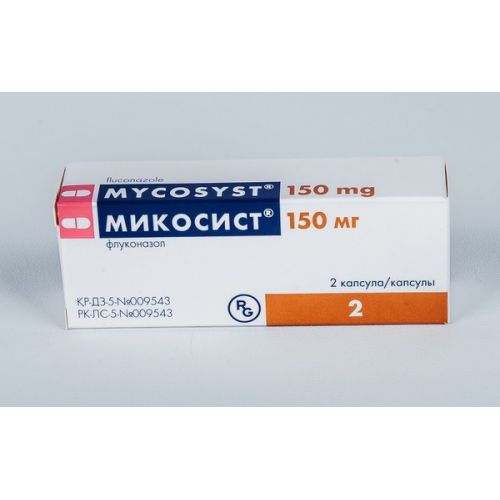
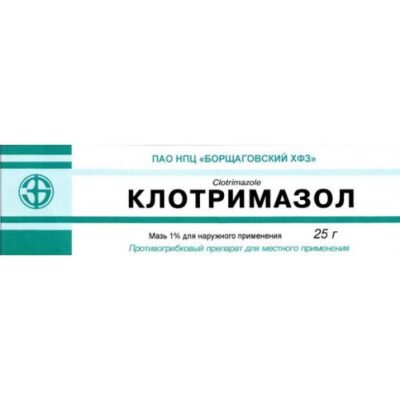
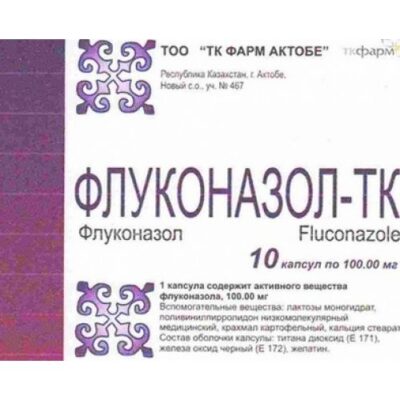
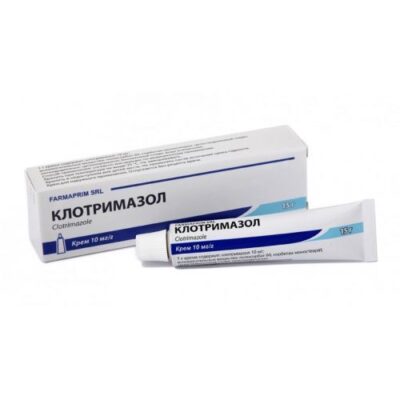
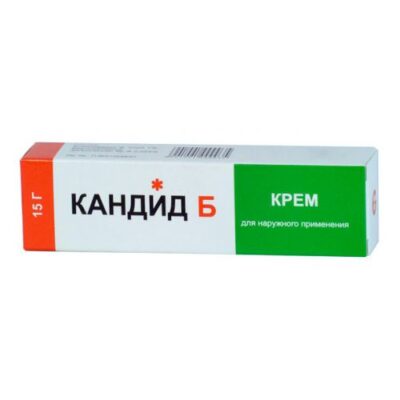
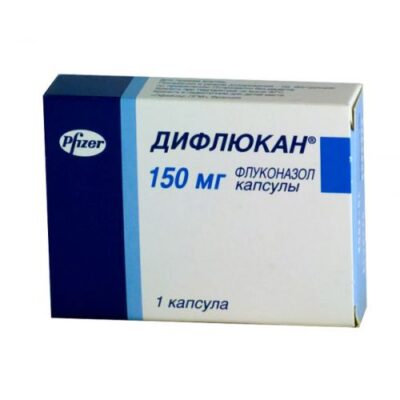
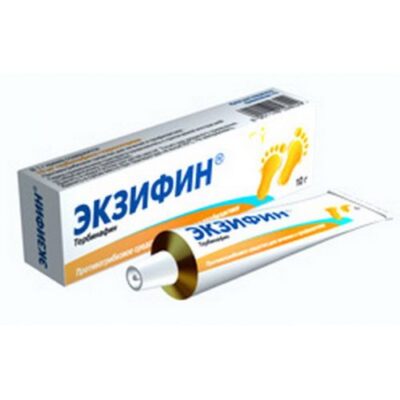
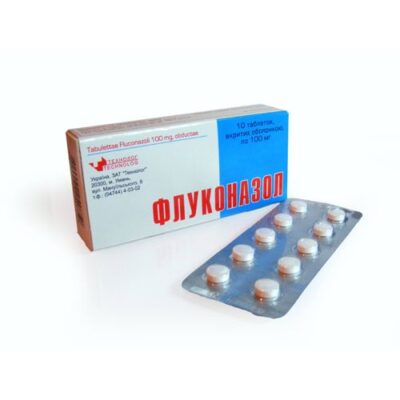
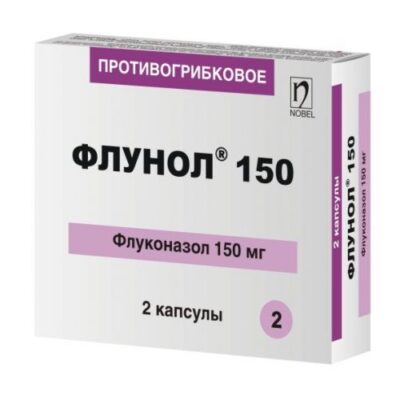
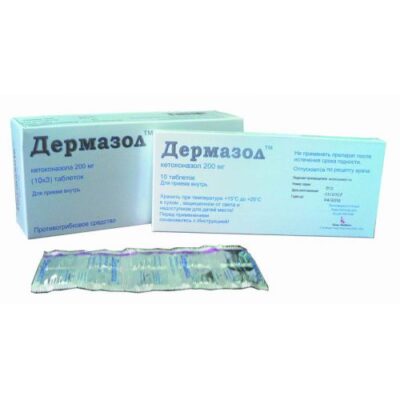
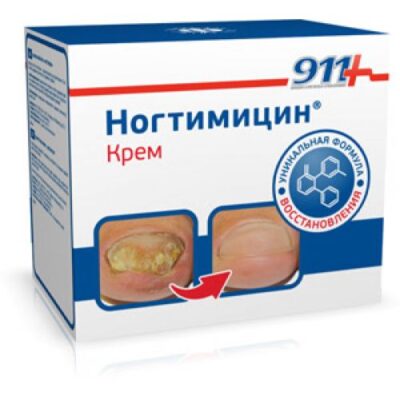






Reviews
There are no reviews yet.